Thirty years in the care sector - how care homes have met their residents' changing needs over time
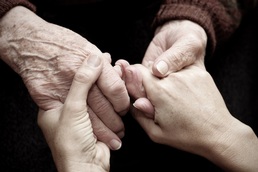 From improving privacy and dignity by providing single bedrooms to offering specific dementia related activities, care homes have changed greatly over the last 30 years.
From improving privacy and dignity by providing single bedrooms to offering specific dementia related activities, care homes have changed greatly over the last 30 years.
Establishments have moved away from an institutional way of delivering care and now allow families greater input in the decisions about what care is offered and how.
Four care home managers with nearly 100 years of experience in the care sector have shared their observations on the changing needs of residents in residential care homes over the last 30 years.
The complexity of care needs have also increased as people live for longer and have more severe age related illness. In 2003 Bupa reported that 36 per cent of residents were living with a form of dementia. By 2015 the Alzheimer’s Society has found the figure is closer to 80 per cent.
One thing that continues to change is the attitude of many towards dementia and Alzheimer’s. Although many families are becoming more knowledgeable about the disease, the stigma for residents themselves about accepting the illness still remains for some people.
Care home manager Jan Moulton of Woodgate care home in Kent, said: “Older people in their 80s and 90s don’t want to accept they have dementia, in the past dementia was associated with institutions and so people still don’t want others to know they have dementia.
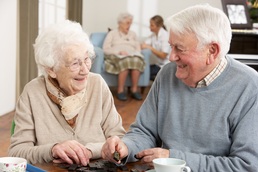
“There is less of a stigma now as there has been more media attention and more television programmes tackling the subject. For younger people things like social media has increased people’s knowledge.
“It was around ten to 15 years ago that research into dementia really started to increase and it has been since then that the stigma of dementia has been improving, but more work needs to be done.”
High expectations
Regulators such as the Care Quality Commission (CQC) and the now abolished Commission for Social Care Inspection have been introduced to inspect and drive up standards, with one care home manager describing families as ‘more happy’ due to the increased input from social work departments, agencies and regulatory bodies.
The expectations of family and residents have changed over time according to general manager of Birch Green care home in Lancashire, Carol Nickeas. Ms Nickeas attributes this to the high number of self-funders now paying for their own care leading people to expect high levels of service.
She said: “People’s expectations are higher which is right, people want a five star standard and customers should expect that. Care homes are more family focused, families want a lot of involvement and want to be a part of the day to day of the care home.
![]() Carol Nickeas
Carol Nickeas
“In the past there were protected visiting hours where visitors could come in the afternoon but couldn’t stay during mealtimes.
“We have an open door policy where family and friends and come as often and for as long as they want.”
“Thirty years ago homes were very regimented and focused on health not mental health, and care homes did not take the holistic approach which care homes do now. Years ago there were no activities.”
Improved accommodation
The expectations for improved standards have been particularly visible in the type of bedroom accommodation offered in care homes.
Ms Nickeas explained: “When I started working in a care home, residents used to have shared rooms with a curtain across and that was the only privacy when washing or changing was taking place. This was not very respectful and wasn’t very nice for residents.”
In august Care Minister Norman Lamb urged care homes to place greater importance on making bedrooms personal to residents, suggesting care homes help residents bring in their own furniture. Describing a move by the CQC to inspect the personalisation of care homes in the future, he said: “I think those care homes that create a real sense of an individual’s home will be the ones who get the great ratings.”
Shona Noon, regional director at prime life explained: “The expectation of single en-suite bedrooms has increased greatly and a major change is from the use of a shared room in the past was prevalent and it was common for two or three residents to share a room.
“Where in the past people would use commodes in their bedroom now people expect to have toilet and bathroom facilities in their own bedroom.”
![]() Shona Noon Finding care
Shona Noon Finding care
It is not only CQC inspection reports people now rely on to research and learn about available care options. Websites such as carehome.co.uk now allow prospective residents a chance to hear about the care home directly from other residents and families using the service.
Care home manager Ann Moore has over 20 years of experience working in care homes, and currently runs Bupa's Haydale care home in Glasgow.
She said: “When they come to visit they will even quote latest reports which they have looked at. There is much more openness as people have greater access to the internet.
“But it is not just the reports people look at when looking into the home, it is the high standard of the home and how they are greeted - first impressions are very important.
 “Twenty years ago there was no health board and no care inspectorate, families didn’t have a say in the care for their loved ones.”
“Twenty years ago there was no health board and no care inspectorate, families didn’t have a say in the care for their loved ones.”
Ms Moulton manager of Woodgate care home, run by Abbey Field Kent Society, agrees that people are increasingly aware of what good care looks like and issues to do with privacy and dignity are more commonly raised.
She said: “I do think people worry about this, this is one of the reasons why shared rooms became a thing of the past with us, understandably people want their own privacy and with all the bad publicity regarding care homes. The public are more concerned with reference to the treatment their loved one may receive and quite rightly so.
“Only over the last 2 years have I seen an improvement in prospective viewers having a good insight to Dementia of their loved ones, however not always do they understand what the future holds for them or how the disease will progress, so I feel more awareness is needed of the whole process although this could prove difficult as no-one knows how it will progress in each individual.”
Future options
It is still not clear is what the future of care homes will look like, however many people believe care homes will increasingly offer a high end hotel experience, with specially designed buildings to improve the lives of people with dementia.
When asked what the future of care homes will look like, Ms Moulton said: “Hotels with care and other facilities which you would expect and this could range from 3 star to 5 star.”
Ms Nickeas agreed and said: “In the future I expect to see home continue to look more like five star hotels, with more bistros and activities in an environment to suit.”
Shona Noon regional director prime life said: “One thing which will continue to be more important is the expectation of the hotel feel concept, with services offered similar to a hotel such as offering nutritionally balanced menu choices to choose from.
“I think care homes will continue to go down the much more homely environment to meet the expectations of the family.”
However Ms Moore believes care homes will be greatly influenced by technology in the future.
She said: “We have residents who have family abroad so we will be using skype more often, and even if a resident has complex needs, they might still be able to use technology.
“I expect homes to continue becoming more highly technical - Staff are very keen to move forward with technology and share their knowledge with residents.”
Latest Features News
 25-Nov-19
2019 Election: Boris Johnson leaves social care in 'too difficult box' but Labour vows to end 'crisis'
25-Nov-19
2019 Election: Boris Johnson leaves social care in 'too difficult box' but Labour vows to end 'crisis'
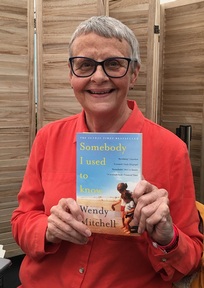 18-Oct-19
Podcast: Wendy Mitchell and dementia: 'My biggest fear is not knowing who my daughters are'
18-Oct-19
Podcast: Wendy Mitchell and dementia: 'My biggest fear is not knowing who my daughters are'
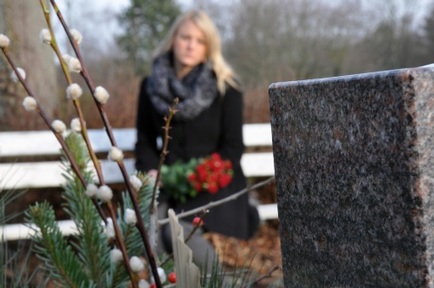 27-Sep-19
Exclusive: Care minister backs care workers' call for time off to grieve and attend funerals
27-Sep-19
Exclusive: Care minister backs care workers' call for time off to grieve and attend funerals
 19-Sep-19
Podcast: Gyles Brandreth says poetry helps ward off dementia
19-Sep-19
Podcast: Gyles Brandreth says poetry helps ward off dementia
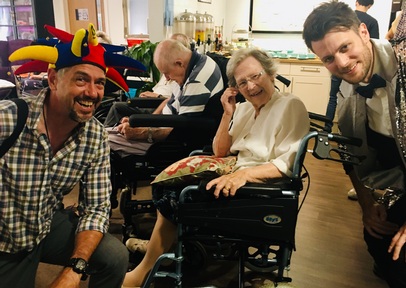 30-Aug-19
Edinburgh Fringe funnyman joins comics facing toughest audience at care home gig
30-Aug-19
Edinburgh Fringe funnyman joins comics facing toughest audience at care home gig